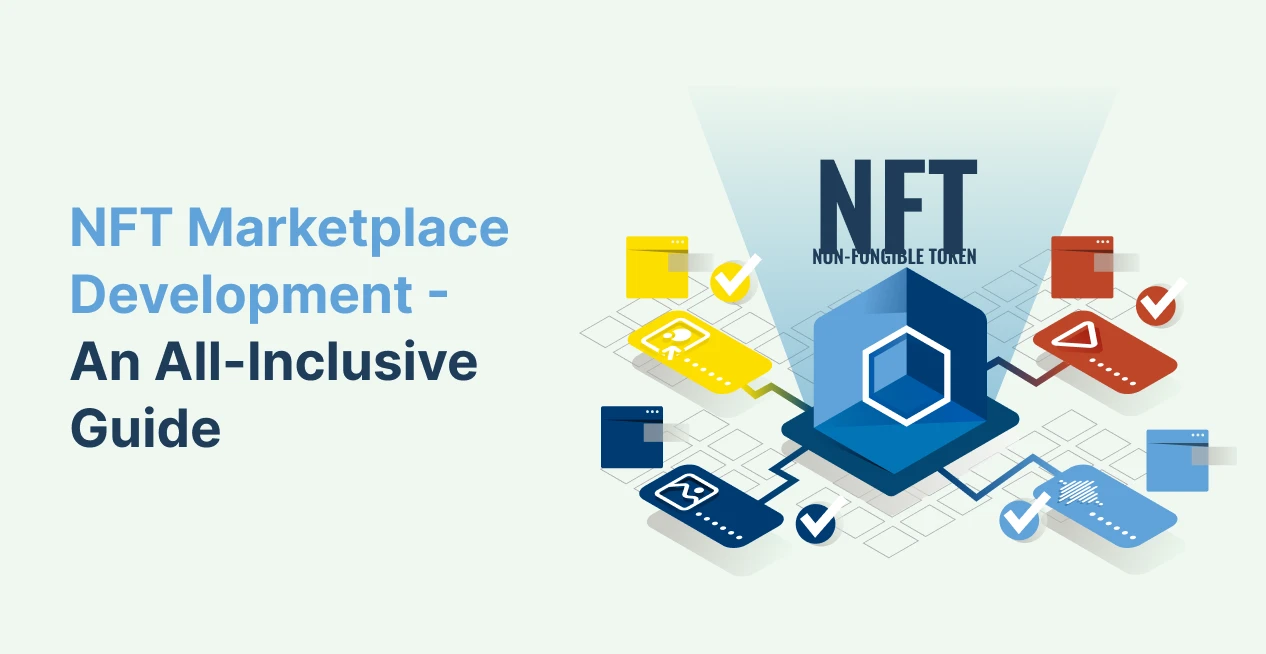Mobile has evolved as one of the basic necessity products we humans use. The success of a mobile phone primarily hinges on its mobile app platform, which serves as its core component and determines its optimal utilization.
Mobile apps offer several functionalities, including information & communication, entertainment, shopping and e-commerce, productivity & utilities, and so on. The increasing demand for mobile apps extends the standard for apps that function on multiple operating systems.
Cross-platform app refers to applications that operate on multiple platforms or systems, like Windows, macOS, Linux, iOS, and Android.
Businesses these days are looking for cross platform app development to reach a wide customer base and maintain their presence. This is why cross platform app development has emerged as an ideal solution for businesses to target both Android and iOS stores. In this blog, let us discover Cross-platform app development.
Cross Platform App Development: An Overview
Cross-platform app development is the one that gives the developers a chance to create mobile applications that can be deployed on more than one operating system, and this application is completely compatible with the different operating systems. The application development is also done in a single universal language that can be easily exported to any platform.
Thus, the app development process becomes faster and boosts developers, too, as they have to write code only once. Many mobile app development companies have started providing cross-platform app development services to assist startups and small companies.
What are Cross Platform Apps?
Cross platform apps are mobile apps developed to function on multiple platforms such as iOS, Android, Windows, etc. These applications have a single code base and thus are easier, faster, and feasible to develop.
The highlight of cross-platform apps is that they can reach a huge target audience with uniform UI and functionalities near to native experience. Cross-platform apps are perfect for startups and mid-level companies as they are developed rapidly, cost-effective, and have comparatively less time to market.
Cross-platform applications are driving the popularity of mobile application development. They can run in multiple mobile platforms at a time, thus allowing startups and other businesses to save costs up to a great extent and decrease overall development time.
Cross-platform apps are compatible enough with more than one operating system, such as iOS and Android. Developers can build a wide range of applications with the help of cross-platform mobile app development. The applications can run on different platforms but with a single code system.
As a result, the companies can release their products faster with improvement in quality standards. Such applications can reach the targeted audience quickly because they are compatible with different operating systems. The majority of startups find it suitable because of its rapid development and turnaround time.
Cross-platform app development can instantly remove the dissimilarities seen between OS platforms in its UI and UX. This helps in reducing the overall budget of the developers while developing applications. Thus, cross-platform application development helps in catering to user’s requirements and provides affordable solutions for all.
Native vs Cross Platform: The Differences
The debate has been always on about choosing between native and cross-platform mobile app development for the developers. Both frameworks have their pros and cons. However, they are unique in their ways. Comparing with cross-platform apps, native apps are different.
Native apps can work only for a single operating system whereas cross-platform apps can work for multiple operating systems. For a particular operating system, for example, Java for Android and Objective C for iOS, native applications use particular programming languages.
Moreover, native apps are considered superior to cross-platform apps because they perform faster and offer a higher degree of reliability. Native apps are specially made to match the layout and the UI. The functions in it use the maximum advantage of the mobile platform. However, for startups, native applications can prove indeed costly.
That is why they prefer cross-platform apps as they are cheaper and have more advantages than native apps. The main disadvantage of native apps is that they can run on a single platform only, so the companies have no option but to forcefully create duplicate versions of the app, that can work on other platforms. These duplicate apps develop costs and turnaround time too.
For native apps, the platform SDK enables access to the device’s API without any problems or hindrances. In cross-platform apps, there is no assured access to all device APIs. Native apps are more consistent with the UI components, whereas cross-platform apps have limited consistency with the devices’ UI components.
So, rather than using native apps and developing multiple duplicate versions, startups prefer cross-platform apps only. Cross-platform apps are thriving to improve their overall performance through making better apps continuously.
The developers have found a wide range of tools and technologies that can help create better cross-platform apps that look almost similar to native apps. By looking at your business’s current sound position, you can decide about what to use – native apps or cross-platform apps.
Challenges Faced in Cross Platform Mobile App Development
Before a few years, there were a few constraints in the cross-platform app development to make simple mobile games and applications. But gradually over time, cross-platform development becomes more powerful, adaptable as well as flexible with the help of emerging technologies and advancements.
Nonetheless, there are still a few challenges that hinder the cross-platform app development process. The performance at times drops down because of improper and inconsistent communication between the gadgets of native and non-native components.
There are only limited tools and technologies available yet to the developers for the cross–compliance of these apps. There are user experience complaints registered for performance-based issues. Talking about the security concerns, you should not opt for cross-platform applications if your app manages corporate as well as the user’s data on an everyday basis. However, the benefits outweigh the disadvantages of the Cross-platform app development process.
Benefits of Cross Platform App Development
1. More Audience can be Reached
A cross-platform app can be deployed on various devices on various platforms, which can practically double your target audience. With cross-platform app development once, you can target audiences using Android or iOS phones at once. This can save your time and money in targeting more audiences with fewer efforts.
2. Reduced Expenses
As cross-platform app development allows a single application to be deployed on multiple platforms, it can reduce the company’s expenses to get a separate app developed for each platform and pay for various tools and technologies. Also, the fact that codes can be reused and adopting agile methodologies can reduce the expenses even more.
3. Uniformity Across Platforms
As only one cross-platform application is developed common for all the platforms, it becomes easier for users to find identical UI and UI elements for different platforms. This uniformity can help in retaining customers even if they change devices or operating systems. Also, the UI/UX plays an important part in customer retention and engagement.
4. Faster Development Process
Cross-platform application development is faster as compared to other app development processes. It can save developers’ time and effort by 50% as they have to code only once. A feature-filled application can be developed for multiple platforms with less effort and in comparatively less time.
5. Quick Prototyping
As the development process becomes faster in the case of cross-platform app development, prototyping becomes simple, faster, and effective. Quick prototyping can ensure that the development process is going faster, and as per the pre-decided flow. This can lead to the correct development of the idea into an application.
6. Reusable Code
This is the best benefit of cross-platform application development. Once a code is written, it can be used repeatedly to save time that was earlier wasted to develop new codes every time for different platforms. Time, effort, and cost are reduced as the same code can be used for different platforms, and the efficiency of developers can be increased as well.
7. Simple Cloud Integration
A highlighting benefit of cross-platform apps is their compatibility with the integration of multiple plugins. Thus, the plugins for cloud integration are highly compatible and so, scalability and functionality can be increased as a single source code is used for integrating various plugins and cloud functionalities.
8. Product Maintenance & Deployment is Easier
As there is only a single app that is developed for various platforms, it is comparatively easier to maintain it and deploy any changes in the code. Any updates can be easily deployed across all the platforms, and devices. The same thing goes if there is any bug or error then a common code can make it easier to correct it.
9. Time-to-Market is Reduced
In the case of cross-platform app development, as the development process is faster, deployment and maintenance are faster, it becomes straightforward to reduce the time to market. As the time to the market reduces, the application can reach the audience faster, and thus it can be beneficial for your business to make your services available faster.
| Further Reading → Developing Applications From a Single Codebase – The Future of Application Development
Top Cross Platform App Development Frameworks
Cross platform app development frameworks give users a platform to develop mobile applications compatible with more than one operating system. This saves time, cost, and mainly the developer’s efforts. There are many cross-platform app development frameworks in the market, but only a few are worth your efforts. Each of the app development frameworks has its unique features as well as drawbacks.
| Further Reading → 8 common cross-platform tools for mobile app developers.
Let’s have a look at those who are leading in the list of cross-platform app development frameworks and some of the leading cross-platform apps developed with these frameworks,
1. Xamarin:
As an independent cross-platform development framework, Xamarin was founded in 2011 but later on, it was acquired by Microsoft in 2016. It solves the problem of separated native technology stacks, because of which mobile app development was difficult and expensive. Xamarin works seamlessly on an array of platforms such as Android and iOS. It uses a single tech stack for speedier development.
It shares more than 75% of your codes across platforms. Xamarin is expensive for enterprises however it is free of cost for individual firms and startups. If your apps demand heavy graphics, Xamarin is not recommended because it uses a different method for visually laying screens. Furthermore, it offers only limited access to some of the important libraries. Creating UI is time-consuming for Xamarin.
Apps Made with Xamarin Cross-Platform App Framework
- Fox Sports
- Alaska Airlines
- HCL
- American Cancer Society
- BBC Good Food
2. React Native:
React Native is the milestone that Facebook launched in 2015, and it created a boom in the market for hybrid frameworks. After a few years of introduction into the market, React native paced up and became the most popular and trendy framework for developers. It shares up to 80% codebase across all platforms after checking the application’s complexity. It helps in reviewing results instantly by offering ready-to-apply elements and reducing turnaround time considerably.
It renders a highly responsive interface by focusing on UI only up to a great extent. It also provides a high-quality native-like user interface by providing an accelerometer and camera. However, react-native lacks consistency when the updates are to be released. It increases the duration of the debugging process for the Android system. This framework is not built in conjunction with iOS or Android.
Apps Made with React Native Cross-Platform App Framework
- Bloomberg
- Skype
- Tesla
3. Flutter:
Flutter is an open-source and free cross-platform framework that helps create native interfaces for both – Android and iOS. It is a cross-platform framework maintained by Google. Flutter ranks amongst the top 3 most loved frameworks. The feature of hot reloading helps the developers to see changes within the codes in a fraction of seconds rather than minutes.
Flutter is considered an ideal framework for MVP Development. Flutter is based on Dart, which is quite easy to learn for the developers. However, Flutter does not support Apple TV and Android TV. As compared to native development, flutter lacks in ready-to-implement functionalities.
Apps Made with Flutter Cross-Platform App Framework
- Alibaba
- Google Ads
- Tencent
4. Adobe PhoneGap:
A couple of years back, PhoneGap was termed, Apache Cordova. It is owned and sourced by Adobe. It uses HTML5, CSS, and JavaScript and is a single cross-platform app development framework. Adobe PhoneGap allows the user to share the app with the team so that they can submit feedback. It offers cloud-based solutions too for the users.
It is better than its competitors because it has features such as third-party tools and a large number of plugins. However, it lacks performance and UI widgets, so it is not advisable to use them for high-performance applications and hardware-intensive apps such as gaming. This framework is dependent on iOS SDKs and thus downloading these SDKs requires Mac.
Apps Made with PhoneGap Cross-Platform App Framework
- Wikipedia
- TripCase
- FanReact
5. Ionic:
Ionic is considered an open-source cross-platform application framework and is licensed under MIT. For all translation purposes, it uses HTML5. It inherits a few design elements from both – iOS and Android. It enables the users to build native-like hybrid apps and progressive web applications whenever needed. Ionic is specially designed for mobile operating systems as it is based on the SAAS UI framework.
Robust applications can be made with the help of numerous UI components. Ionic helps in knowing the whole mobile DevOps lifecycle. For Ionic, the developer needs to have more knowledge of AngularJS which can be a hindrance. It is complex to design in-app navigation because it is not easy to use a UI router.
Apps Made with Ionic Cross-Platform App Framework
- IBM
- ING
- SAP
- NASA
Cross Platform App Development: The Conclusion
In a nutshell, cross platform app development has rising popularity in the market. It has become an important alternative to native development. Cross-platform applications are the smartest choice for businesses that require wide coverage with applications that are cost-effective and have quick turnaround time. It is your choice to pick up the best and ideal framework and collaborate with the right development partner. Cross-platform solutions are effective.
Out of all the frameworks mentioned above, the cross-platform mobile app development company can guide you better and give the best decision for your company as to which framework will suit your company in the best way. Share your details now to get that perfect app for your business.
FAQ for Cross Platform App Developers
The cross platform app development market has surpassed $7.5 billion in the end of 2018.
Mobincube, IntelliJ IDEA, QT, Cocos 2D, Corona, Ionic, Yapp, Ruby Motion and drop source are the alternative cross platform editors and IDEs.
JavaScript Language Tutorials, Eloquent JavaScript, Tutorials Point, Ruby language tutorials, Pragmatic Studio and C++ Language tutorials are the useful cross platform language tutorials.
A developer or a technical expert can help you in the best way for building cross platform applications. But if you are a leader or an entrepreneur, you must have adequate knowledge of the entire process.
The newer approaches to cross-platform development are:
Hybrid Mobile App Development
Rapid Mobile App Development
Windows Universal Apps
Progressive Web Apps
The business benefits of Cross-Platform Development include:
Launching the software simultaneously on various platforms
Faster development time
Reaching a wider audience
Faster and easier updates
Cost savings and shorter time to profitability








